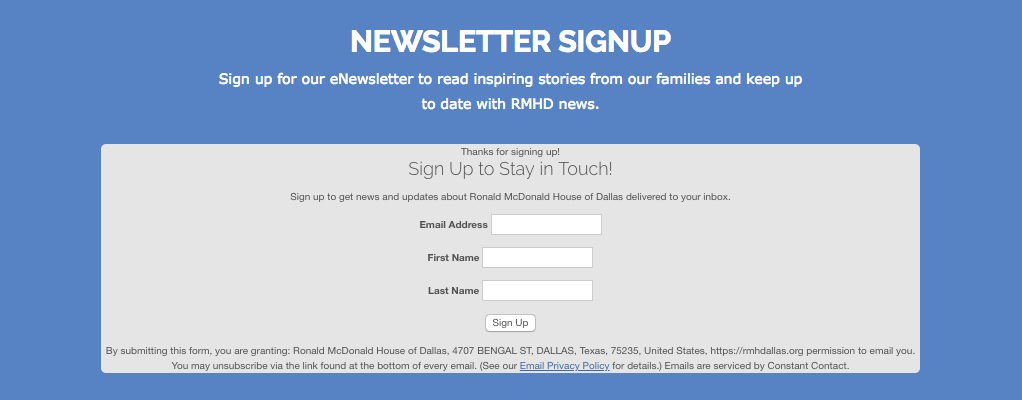How to Reach Donors and Attract Volunteers for Your Nonprofit
If you are one of the 11.4 million individuals that work in the nonprofit sector, you are likely wearing many hats. At one time you may be coordinating volunteers, and at another (or likely at the same time) managing the marketing, grant writing and program development within your organization. Sometimes it is hard to conceptualize how your next marketing campaign will look like when you are juggling the duties and responsibilities of all that your position entails. But you are not alone, and we’ve listed a few fundamental ways to help streamline your future marketing efforts and maximize the support from your donors and volunteers.
First, you are not alone
In the most recent data from The Urban Institute, The Nonprofit Sector in Brief 2015, research revealed just how essential the nonprofit sector is to the United States economy. Following is a brief list of highlights from the study:
- 1.41 million nonprofits were registered in the US in 2013
- The nonprofit sector represented $905.9 billion of the U.S. GDP (or 5.4%)
- 501(c)(3) organizations alone represented $1.73 trillion in revenue
- Total private giving recently surpassed pre-recession giving, coming in at $358.38 billion
- One-quarter of the population volunteered with nonprofits contributing 8.7 billion hours (valued at $179.2 billion)
All this data clearly shows how effective the nonprofit model really is, despite the challenges that present themselves daily in the average organization. Moreover, it also represents the massive potential market for your advertising and outreach activities. Take for example your local community. Just within your city, 25% of the population would like to be volunteering with some nonprofit in your area. Why not yours? Additionally, private giving is higher than it has been since before the recent recession. What can you do to tap into that energy, enthusiasm and generosity? To answer those questions let’s break them down into two categories: marketing to reach donors, and marketing to reach volunteers.
Marketing to attract donors
As you certainly know, donor activity is the lifeblood of the nonprofit sector. Without a steady stream of donor dollars flowing in, even the best plans can fall by the wayside. To earn the attention and generosity of those in the donor pool, you must first establish a unique brand message, targeted specifically to potential donors. In doing so, you will then be able to effectively communicate the purpose, goals and needs of your organization in terms that connect with your target audience.
Once you have developed your brand message, the most critical element of communicating to potential donors is finding the right avenues in which to engage your audience. Look for areas where you can target a receptive and enthusiastic audience. You may consider any and all of the following as effective delivery channels:
Events
Industry events that directly, or tangentially, relate to your organization can be a wellspring for potential donors. These events typically are attended by participants that are immediately interested in what you are doing. Whether they are sponsors of the event, speakers or community influencers, the individuals who attend an event like Habitat for Humanity’s “Dream Builder’s Dinner” can be a great source of donor income.
Print and promotional items
Although digital marketing is growing in influence and importance every day, time-tested channels like print media offer benefits that simply cannot be replaced. A simple postcard can be distributed to potential or existing donors and a promotional product can be used over and over again by the recipient. They can be hung on a refrigerator, left on a desk for future consideration, or given to a friend or colleague. Either way, this is something you just cannot replicate with digital media.
Critical to your continued success will be maintaining existing donor relationships. There are few better ways to nurture these relationships than through recurring email communications. Previous donors want a way to know that their dollars are being put to good use, and email newsletters give them the opportunity to stay in touch with their donation. Moreover, by incorporating language that encourages recipients to share the newsletter, you can begin to build a list of new donors that are directly related to your best source of proven donors.
Social media and online marketing
Many of the major social media outlets offer comprehensive tools for marketing your nonprofit. For example, Google AdGrants offers $10,000 in ad budgets per month, for free, to qualifying organizations. Facebook has some very well-developed tools for marketing your organization. Social media and online marketing channels can also be great tools for grassroots fundraising, like DonorsChoose.org that connects teachers in high-need communities with donors who want to help.
Marketing to attract volunteers
Although there is overlap in the methods used to attract donors and volunteers, your messaging should change to reflect the different needs of your specific marketing campaign. For example, when searching for volunteers, although it would be nice to get them to donate as well, your target audience is more interested in providing time rather than dollars. This nuance should be reflected in your delivery methods.
The list below contains some ideas for adapting your message to the specific channels with the purpose of attracting new volunteers.
Social media
Again, with the tools and resources available for nonprofit organizations, and with the real-time interactivity of the users there, social media is becoming the place for active individuals to engage with organizations they care about. A simple call to action on your Facebook page could result in more volunteers than you could imagine. Create events for your volunteer opportunities and encourage your audience to share them with their circles.
With regular newsletters to a properly segmented email list, you can direct specific messages to your volunteer, and potential volunteer, bases. Keeping in mind that your volunteer base is more interested in giving time rather than money, a well-messaged and regularly-delivered newsletter can be a great resource for cultivating your volunteer pool. Focusing on results obtained while sharing upcoming opportunities, your volunteer audience will feel informed and ready to be part of the action.
Experiential marketing
There is no replacement for one-on-one interaction. New and creative ways of marketing to individuals in the real world have become a popular and highly-productive way to market to your audience. Finding unique settings to demonstrate your abilities to a live audience can serve a very strong roll in a holistic marketing strategy. Seminars, workshops, or live events like the Sugan G. Komen running fundraiser can give volunteers an opportunity to engage with your organization before they make a time commitment. Moreover, experiential marketing at university events, religious venues or other philanthropic organizations often offer opportunities to present your nonprofit to their own communities.
Find your voice, find your success
Be creative and be honest. Finding the right channel to communicate your message can be a daunting process. However, by demystifying the process, you will begin to see the specific benefits of each channel and how they can work for you. There are marketing options for nearly every budget and, with the right approach, you are sure to find the one that fits your message and brings awareness to your cause.




